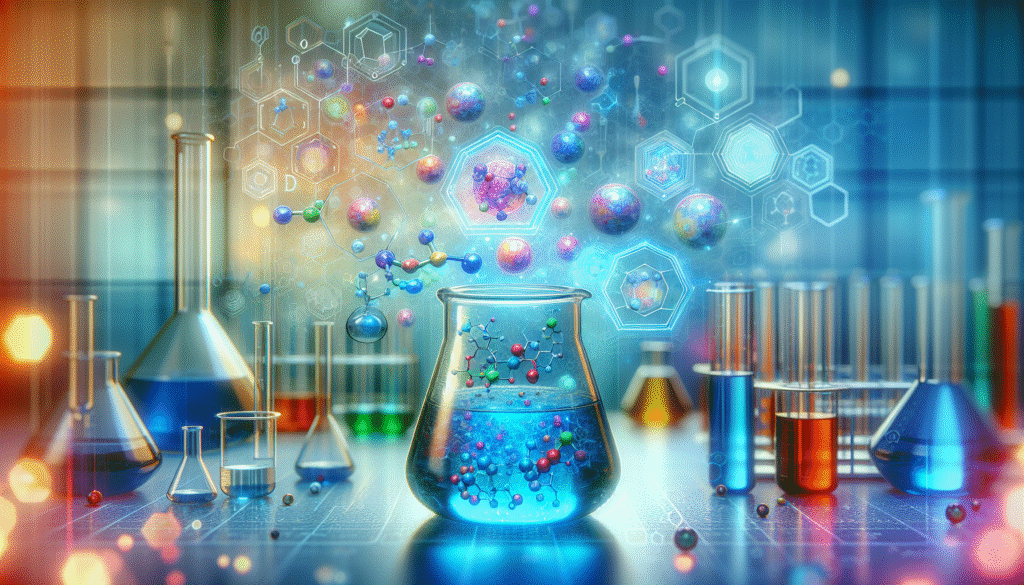
Have you ever wondered how certain substances can influence your mental health and cognitive function?

Introduction to Methylene Blue
Methylene blue is a compound that has garnered attention in both scientific and therapeutic communities due to its potential effects on cognitive functions and neurotransmitter levels. Originally developed as a dye, its applications have extended far beyond that initial purpose. This article will discuss the biochemical properties of methylene blue, its role in enhancing neurotransmitter levels, and the implications for mental health and cognitive function.
What is Methylene Blue?
Methylene blue, with the chemical formula C16H18ClN3S, is a synthetic compound that was first synthesized in the 19th century. It is characterized by its vibrant blue color and has been used historically in various industrial applications, as well as in medical settings as a treatment for conditions like methemoglobinemia.
The Biochemical Mechanism of Methylene Blue
Understanding how methylene blue interacts at a molecular level is crucial to comprehending its effects on neurotransmitter levels. Methylene blue operates as an electron carrier in the mitochondrial respiratory chain, facilitating the conversion of ADP to ATP. This biochemical process is essential for the production of cellular energy.
Moreover, methylene blue has been found to inhibit the enzyme monoamine oxidase (MAO). This enzyme is responsible for breaking down neurotransmitters such as serotonin, dopamine, and norepinephrine. By inhibiting MAO, methylene blue may increase the availability of these neurotransmitters in the brain, potentially enhancing mood and cognitive function.
Neurotransmitters and Their Role in Mental Health
What Are Neurotransmitters?
Neurotransmitters are chemical messengers that transmit signals across synapses from one neuron to another. They play a vital role in regulating numerous physiological processes, including mood, anxiety, cognition, and motor function.
Key Neurotransmitters and Their Functions
| Neurotransmitter | Function |
|---|---|
| Serotonin | Regulates mood, anxiety, and sleep cycles. |
| Dopamine | Influences pleasure, reward, and movement regulation. |
| Norepinephrine | Affects attention, response actions, and stress. |
| GABA | Acts as a primary inhibitory neurotransmitter, promoting relaxation. |
| Glutamate | The main excitatory neurotransmitter, associated with learning and memory. |
Each neurotransmitter has specific functions and contributes to overall mental health, making their regulation imperative for emotional and cognitive stability.
Methylene Blue and Neurotransmitter Modulation
Enhancing Serotonin Levels
Research indicates that methylene blue may enhance serotonin levels by inhibiting MAO, which could lead to improved mood and reduced anxiety. Elevated serotonin levels are often associated with feelings of well-being and stability.
Promoting Dopamine Availability
Dopamine plays an essential role in motivation and reward pathways. Methylene blue’s capacity to inhibit MAO can lead to increased dopamine levels, potentially improving motivation and overall cognitive function.
Effects on Norepinephrine
Norepinephrine is crucial for attention and arousal. By modulating its levels, methylene blue may aid in concentration and overall cognitive performance, conducive to greater productivity and mental clarity.
Methylene Blue in Clinical Research
Methylene Blue as a Cognitive Enhancer
Studies have shown promise regarding methylene blue’s role in cognitive enhancement. Some trials indicate that low doses of methylene blue may improve memory and learning capabilities.
A notable study explored the effects of methylene blue on cognitive performance among older adults. Participants reported improved focus and memory recall, highlighting its potential as a neuroprotective agent.
Neuroprotective Properties
The neuroprotective properties of methylene blue are another aspect worth considering. Research has indicated that methylene blue can protect neurons from degeneration, particularly in models of neurodegenerative diseases such as Alzheimer’s and Parkinson’s.

The Implications for Mental Health Treatment
Methylene Blue in Treating Depression and Anxiety
Given its ability to modulate neurotransmitter levels, especially serotonin and dopamine, methylene blue has been examined as a potential treatment for depression and anxiety disorders. Early-phase clinical trials suggest that methylene blue can exhibit antidepressant effects, making it a candidate for further exploration as an adjunct therapy.
Safety and Dosage Considerations
While methylene blue shows promise, it is essential to consider dosage and safety. Typically, studies have utilized doses ranging from 0.5 to 4 mg/kg, with lower doses generally showing favorable outcomes and fewer side effects. At higher doses, there have been reports of adverse reactions, thereby underlining the importance of professional oversight when using this compound.
Mechanisms Behind the Effects of Methylene Blue
Enhanced Mitochondrial Function
The role of mitochondrial function in mental health cannot be overstated. Methylene blue improves mitochondrial efficiency, leading to better ATP production and, consequently, enhanced neuronal health. Improved energy metabolism translates to better cognitive functioning and overall brain health.
Impact on Oxidative Stress
Oxidative stress has been implicated in numerous neurodegenerative conditions. Methylene blue exhibits antioxidant properties, helping to protect neurons from damage caused by free radicals. This protective function may contribute to improved cognitive longevity and resilience against age-associated decline.
Methylene Blue in the Context of Other Neuroenhancers
Comparison with Other Cognitive Enhancers
In the landscape of cognitive enhancers, methylene blue stands out due to its multifactorial benefits. Other substances, such as racetams and modafinil, have different mechanisms and side effects. For example:
| Substance | Mechanism | Benefits | Side Effects |
|---|---|---|---|
| Methylene Blue | Electron carrier, MAO inhibition | Mood enhancement, neuroprotection | Mild GI issues, potential for serotonin syndrome |
| Racetams | AMPA receptor modulation | Memory improvement | Headaches, anxiety |
| Modafinil | Inhibition of dopamine reuptake | Wakefulness, focus | Insomnia, anxiety |
Methylene blue’s safety profile and potential benefits make it an attractive option, especially for individuals seeking cognitive enhancement without significant side effects.
The Future of Methylene Blue Research
As you consider the implications of methylene blue, it’s important to stay informed about ongoing research. Studies continue to explore the long-term effects, safety, and optimal dosing strategies for cognitive enhancement and mental health treatment.
Conclusion
The potential of methylene blue in enhancing neurotransmitter levels offers exciting avenues for improving mental health and cognitive function. Its dual role as a neuroprotective agent and a modulator of neurotransmitter activity positions it uniquely among cognitive enhancers and mental health treatments.
As research progresses, methylene blue may become a pivotal agent in managing conditions like depression, anxiety, and even neurodegenerative diseases. However, it is crucial for you to consult with healthcare professionals before considering methylene blue or any new supplement, particularly regarding dosage, safety, and interaction with other medications.
Understanding the intersection of biochemistry, mental health, and therapeutic innovation allows you to navigate these waters with a critical eye. As the landscape of cognitive enhancement evolves, methylene blue stands as a testament to the complexity and potential of neuroscience, where a single molecule could redefine treatment paradigms for countless individuals.